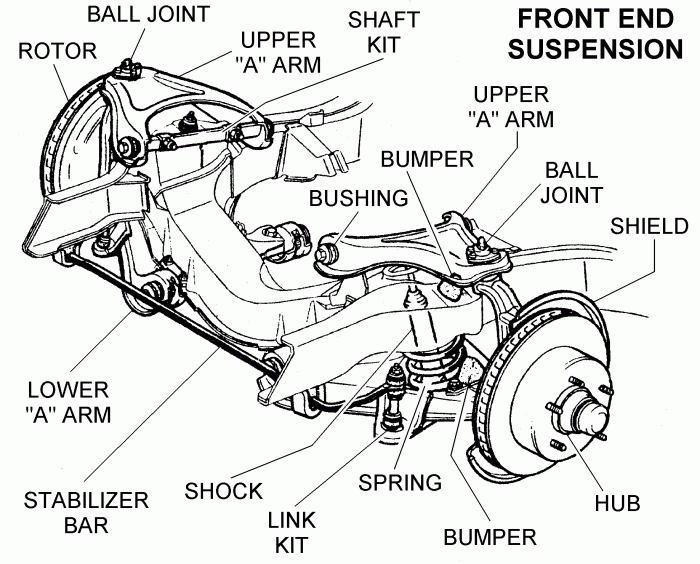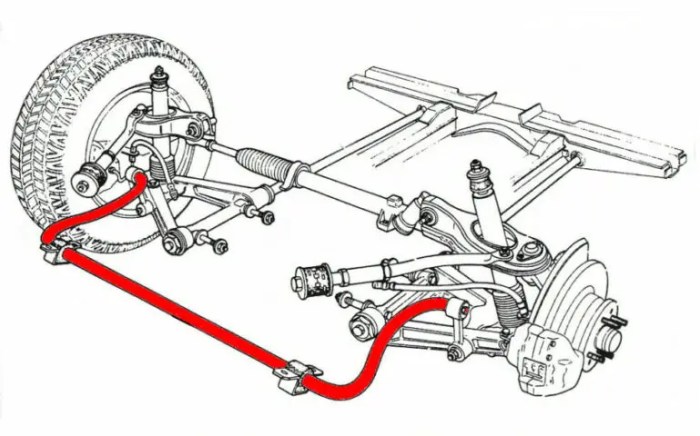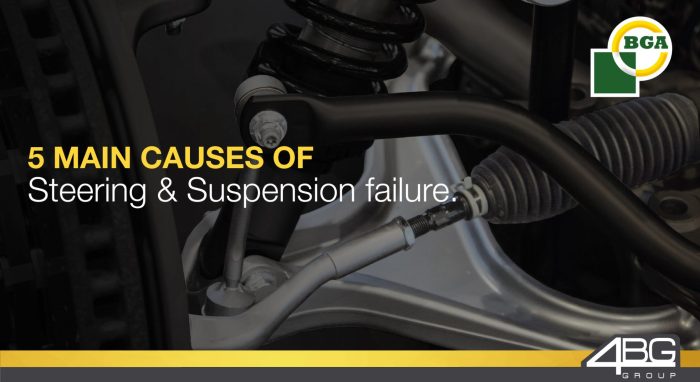Excessive looseness in steering and suspension components can cause a multitude of issues, ranging from safety hazards to diminished vehicle performance. This comprehensive guide delves into the potential risks, causes, and impact of excessive looseness, providing valuable insights for vehicle owners and automotive professionals alike.
Regular inspections, preventative maintenance, and timely repairs are crucial to ensure the longevity and safety of your vehicle. This guide offers practical recommendations to help you identify, address, and prevent excessive looseness in steering and suspension components, empowering you to maintain optimal vehicle handling and performance.
Safety Hazards of Excessive Looseness in Steering and Suspension Components

Excessive looseness in steering and suspension components poses significant safety hazards. Loose components can compromise vehicle handling, stability, and braking performance, increasing the risk of accidents. Accidents caused by excessive looseness include loss of control, rollovers, and collisions with other vehicles or objects.
Identifying Symptoms of Excessive Looseness
- Wandering or pulling to one side while driving
- Difficulty maintaining a straight line or keeping the vehicle in its lane
- Unusual noises or vibrations coming from the steering or suspension system
- Excessive play or free movement in the steering wheel
- Uneven or excessive tire wear
Regular inspections and maintenance are crucial for detecting excessive looseness early on. Visual inspections can identify loose components, while road tests can reveal symptoms such as wandering or pulling.
Causes of Excessive Looseness
- Wear and tear due to normal use
- Corrosion from exposure to moisture and salt
- Improper installation or tightening of components
- Overloading or exceeding the vehicle’s weight capacity
Loose steering and suspension components can also result from collisions or impacts, leading to misalignment or damage.
Impact on Vehicle Handling and Performance
- Impaired steering response and reduced cornering ability
- Increased stopping distances due to reduced braking effectiveness
- Reduced stability and increased risk of rollovers
- Uneven tire wear and reduced tire life
Loose components can also cause excessive vibrations, which can affect driver comfort and fatigue.
Prevention and Maintenance Measures, Excessive looseness in steering and suspension components can cause
- Regular inspections and maintenance to identify and address looseness early on
- Proper installation and tightening of components according to manufacturer’s specifications
- Avoiding overloading or exceeding the vehicle’s weight capacity
- Using high-quality components and materials
Regular alignment checks can also help prevent excessive looseness in steering and suspension components.
Repair and Replacement Options
Repair options for loose steering and suspension components vary depending on the extent of damage. Minor looseness may be corrected by tightening or replacing bolts or nuts. More severe damage may require replacement of entire components.
Replacement parts should meet or exceed the original equipment manufacturer’s specifications to ensure optimal performance and safety.
DIY vs. Professional Repairs
While some minor repairs to steering and suspension components can be performed by skilled DIY enthusiasts, complex repairs or safety-critical components should be handled by qualified professionals.
Professional mechanics have the expertise, tools, and equipment to diagnose and repair these components accurately and safely.
Expert Answers: Excessive Looseness In Steering And Suspension Components Can Cause
What are the common signs of excessive looseness in steering and suspension components?
Common signs include: Difficulty steering, excessive play in the steering wheel, uneven tire wear, clunking or rattling noises when driving over bumps, and reduced stability during cornering.
What are the potential consequences of driving with loose steering and suspension components?
Loose steering and suspension components can lead to decreased control over the vehicle, increased risk of accidents, extended stopping distances, and premature tire wear.
How often should I have my steering and suspension components inspected?
Regular inspections are recommended every 12,000 to 15,000 miles or as per the manufacturer’s guidelines.

